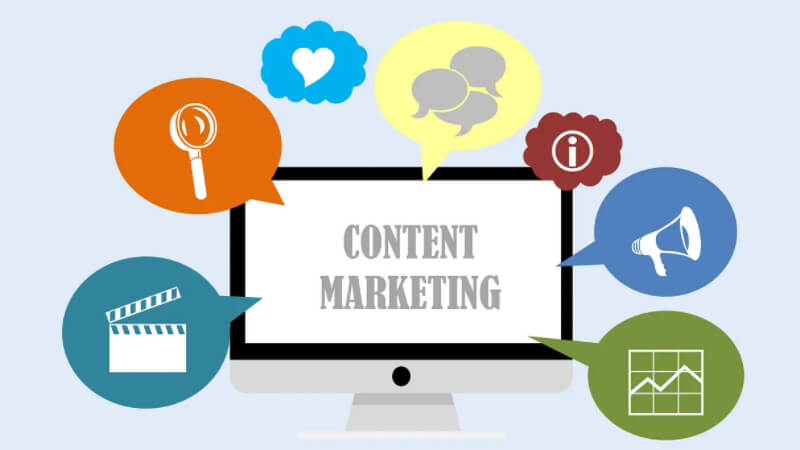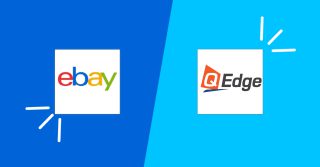Staying ahead of the curve is essential for fostering growth and achieving success in the dynamic and constantly changing world of content strategy. Enter the content hub's transformational power. A content hub acts as the core of your content ecosystem, giving you the ability to fully control your strategy, automate procedures, and let your creativity run wild. A content hub can foster synergy, collaboration, and seamless distribution by combining and organizing your various kinds of content. This will help your business experience unrivaled growth and engagement.
6 Reasons to Use a Content Hub
1. Centralized Content Management
A Content Hub is a one-stop solution for your content needs. By centralizing all your content in one place, you can manage, organize, and update it more efficiently. It saves time and resources by eliminating the need to search for content across multiple platforms and systems.

2. Improved User Experience
With a Content Hub, your audience can easily find all your content in one place. This will significantly improve the user experience, as they won’t have to navigate through different platforms or websites to find what they're looking for. It also provides a consistent brand experience, which can help build trust and loyalty.
3. Enhanced SEO
By centralizing your content, you can improve your SEO. A Content Hub allows you to interlink your content, boosting your site's authority and visibility on search engines. Moreover, having all your content in one place can increase your website’s dwell time, which is a positive signal to search engines.
4. Streamlined Content Creation and Distribution
A Content Hub can streamline your content creation and distribution processes. You can plan, create, and distribute content from a single platform, which can save time and improve efficiency. It also allows you to easily repurpose content for different channels, maximizing your content’s reach and impact.

5. Data-Driven Insights
With a Content Hub, you can track how your content is performing across all platforms in one place. This allows you to gain data-driven insights that guide your content strategy. You can learn what type of content resonates with your audience, what channels are most effective, and adjust your strategy accordingly.
6. Increased Engagement and Conversations
A Content Hub can boost engagement and conversions. By providing relevant and valuable content in one place, you can engage your audience, build relationships, and guide them through the buyer's journey. This can lead to increased conversions and customer retention.
Content Hub FAQs
1. What is Sitecore Content Hub?
A Content Hub is a centralized platform where businesses can manage, organize, and distribute their content. It can include various types of content, such as blog posts, videos, social media posts, whitepapers, and more. A Content Hub is not just a storage space for content; it's a strategic tool that can drive content strategy and growth.
2. Who should use a Content Hub?
Any business that produces and distributes content can benefit from a Content Hub. Whether you're a small business, a large corporation, or a non-profit organization, a Content Hub is a good tool in content management Sitecore, that improves the user experience and drives growth.

3. How do I set up a Content Hub?
Setting up a Content Hub involves several steps:
- Organize your content: Categorize your content in a way that makes sense for your audience. This could be by topic, format, or channel.
- Define your goals: What do you want to achieve with your Content Hub? This could include improving the user experience, increasing engagement, boosting SEO, and more.
- Choose a platform: There are many Content Hub platforms available, so choose one that fits your needs and budget.
- Implement SEO: Use SEO best practices, such as keyword optimization and internal linking, to boost your Content Hub’s visibility on search engines.
- Track performance: Use analytics to track how your content is performing and adjust your strategy accordingly.
4. What are the best practices for using a Content Hub?
Here are some best practices for using a Content Hub:
- Keep your content updated. Regularly update your Content Hub with fresh content to keep your audience engaged and improve SEO.
- Make it user-friendly: Ensure your Content Hub is easy to navigate, with a clean design and clear categories.
- Promote your Content Hub: Use various channels, such as social media and email newsletters, to promote your Content Hub and drive traffic to it.
- Use data-driven insights: Use the data from your Content Hub to guide your content strategy. Learn what works and what doesn’t, and adjust your plan accordingly.
5. How does a Content Hub differ from a Content Management System (CMS)?
While both a Content Hub and a CMS can manage and organize content, they serve different purposes. A CMS is a tool for creating and managing digital content, primarily for individual websites. A Content Hub, on the other hand, is a centralized platform that collects and organizes content from various sources and distributes it across multiple channels. A Content Hub can integrate with a CMS, but it provides more functionalities, including content distribution, SEO optimization, and analytics.
6. Can a Content Hub integrate with other tools?
Yes, a Content Hub can integrate with other tools, such as Content Management Systems (CMS), Customer Relationship Management (CRM) systems, email marketing tools, social media platforms, and more. This allows you to manage all your content-related tasks from a single platform, improving efficiency and effectiveness.
7. What are the Differences between DAM and Content Hub?

| Digital Asset Management (DAM) | Content Hub | |
|---|---|---|
| Focus | Management of digital assets (media files) | Management of various content types |
| Purpose | Centralized storage, organization, and distribution of digital assets | Central platform for content creation, curation, and distribution |
| Content Types | Primarily rich media assets (images, videos, and audio files) | Diverse content types (articles, blogs, web pages, social media posts, etc.) |
| Workflow and Collaboration | Asset-level collaboration and workflows | Content creation workflows, collaboration among creators, and editorial processes |
| Integration and Distribution | Integration with external platforms for asset distribution | Comprehensive distribution capabilities, direct publishing to channels, content syndication |
| Scope | A narrow focus on digital assets | Broader focus on various content formats |
| Features | Metadata management, asset versioning, and asset-specific workflows | Content creation, collaboration, and publishing workflows |
| External Endpoints | Delivering digital assets to external systems and channels | Managing content distribution across multiple channels |
| Example Use Cases | Storing and sharing images and videos within an organization | Containing articles, blogs, web pages, and social media content |
8. DAM vs. Content Hub: Which is the better choice?
Determining which is better between a Digital Asset Management (DAM) solution and a content hub depends on your specific needs and requirements. Both solutions serve different purposes and excel in their respective areas. Here are some factors to consider when evaluating which solution is better suited for your organization:
- Content Types: If your organization primarily deals with rich media assets such as images, videos, and audio files and your main focus is on managing and distributing these digital assets, a DAM solution would be a better fit.
- Content Diversity: If your organization deals with a wide range of content types beyond just digital assets, including text-based content like articles, blogs, web pages, and social media posts, and you require robust content creation, collaboration, and publishing workflows, a content hub would be more suitable.
- Collaboration Needs: Consider the level of collaboration and workflows required for your content creation processes. DAM systems typically offer asset-specific collaboration features, while content hubs focus on broader content creation workflows and collaboration among content creators.
- Integration and Distribution: Evaluate the integration capabilities of each solution with external platforms and systems. DAM systems often have integrations with content management systems, social media platforms, and marketing automation tools, whereas content hubs may offer more comprehensive distribution capabilities and direct publishing to multiple channels.
- Scalability and Future Needs: Consider your organization's growth plans and future content management requirements. Choose a solution that can scale with your needs and accommodate the evolving nature of your content strategy.
Ultimately, the "better" solution depends on the specific context, content management goals, and nature of your organization's content. Some organizations may find a DAM solution to be the ideal fit for their digital asset management needs. In contrast, others may require the broader capabilities of a content hub to manage diverse content types and facilitate content creation workflows. It's essential to assess your requirements and evaluate the features, functionalities, and benefits offered by each solution to make an informed decision.
Final Thoughts
To sum up, a content hub can be a potent instrument for advancing content strategy and expansion. A Content Hub can greatly help your company by centralizing your content, optimizing the user experience, boosting SEO, streamlining content development and delivery, offering data-driven insights, and boosting engagement and conversions. Consider employing a Content hub, whether you're just getting started with content marketing or hoping to enhance your present approach.
Don't forget to pick a platform that meets your goals, structure your content well, utilize best practices for SEO, and let data inform your plan. Keep your audience at the center of your content strategy, which is vital. Your audience may be engaged, relationships can be formed, and growth can be accelerated by offering useful and pertinent material.
Here is our LinkedIn page. If there is anything I can change or add to this, please let me know. I'm glad to add to it depending on your suggestions. Or you can Contact Us Here!







